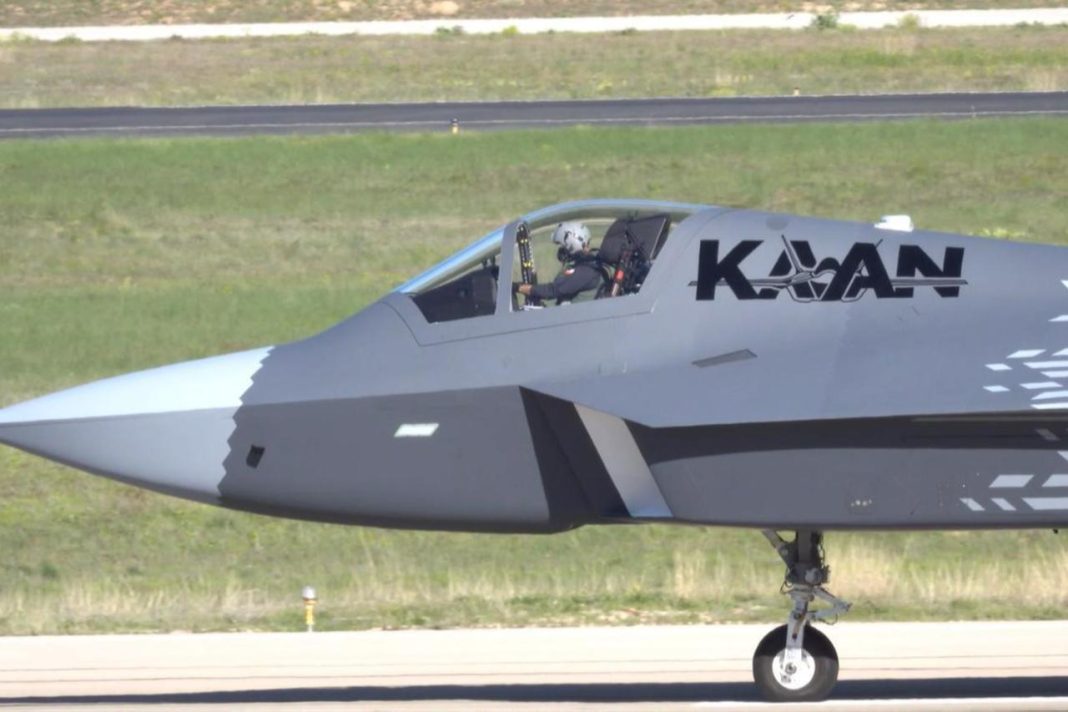Türkiye’s homegrown fighter jet, known as Kaan, is rapidly gaining international attention. Turkish Aerospace Industries (TAI) developed this fifth-generation aircraft, and many countries now see it as a serious competitor to the U.S.-made F-35—especially those seeking modern airpower without the heavy price tag.
Türkiye’s Kaan Stealth Jet Program Gains Momentum
Türkiye launched the Kaan project in 2010 to replace its older F-16 aircraft. In 2016, the government signed a contract to officially start the program. Kaan made its first flight on February 21, 2024, reaching 8,000 feet and a speed of 230 knots. Engineers conducted a second flight in May 2024, and they plan to build six prototypes in total. Türkiye’s air force expects to receive the first aircraft by 2028.
Engineers designed this advanced stealth jet to reduce radar visibility. Its twin-engine layout provides higher speed, longer range, and a larger payload. Kaan can fly at Mach 1.8 and reach 55,000 feet in altitude. It also includes a helmet-mounted display, a wide cockpit screen, and AI-assisted systems that help improve control and situational awareness during missions.
After Türkiye left the F-35 program in 2019 due to its purchase of Russian missile systems, the country shifted its focus inward. The result is Kaan—a symbol of Türkiye’s growing self-reliance in defense manufacturing.
✈️ Supersonic surprise — Gökhan missile pushes Türkiye’s defense beyond F-16 limitations
Indonesia Becomes First Export Customer for Kaan
In July 2025, Indonesia signed a deal to purchase 48 Kaan fighter jets, making it the first international buyer of the Turkish aircraft. This agreement marks a major milestone for Türkiye’s defense exports. The deal highlights Kaan’s appeal to developing nations that are seeking cost-effective alternatives to Western-made jets.
The aircraft supports internal weapon bays and is compatible with Türkiye’s own range of missiles, such as the SOM cruise missile and air-to-air missiles like Gokhan, Gokdogan, and Bozdogan. This local compatibility ensures that countries using Kaan can rely more on regional defense cooperation and less on external suppliers.
This agreement between Türkiye and Indonesia also includes potential cooperation on submarine technology, reflecting a broader partnership in military hardware development. Kaan is now being closely watched by other countries as well, particularly those looking to modernize their fleets without depending heavily on Western suppliers.
Rising Global Interest and Strategic Impact
Following Indonesia’s move, other nations have started showing interest in the Kaan jet. Although no new buyers have confirmed purchases yet, countries with aging fleets—especially those operating older Soviet-era aircraft—are likely to consider Kaan as a replacement. Nations seeking closer alignment with NATO systems also appear as potential customers.
White House Lifts Sanctions on Türkiye After Years of Strain
Reports indicate that even though Türkiye is developing Kaan, it still maintains interest in the F-35 program. Ongoing discussions with the United States suggest that Türkiye is keeping its options open. However, U.S. concerns about maintaining military balance in the Middle East have led to hesitation in selling advanced weapons to countries in the region. This has opened space in the market for Türkiye to step in with Kaan.
What sets Kaan apart is its potential to offer fifth-generation capabilities at a lower cost. With stealth features, speed, advanced electronics, and multi-role functionality, the jet is built to perform in both air combat and ground-attack missions.
Israel Labels Türkiye a Threat, Calls for NATO Expulsion Amid Political Strains
The development of Kaan places Türkiye in a select group of nations—including the U.S., China, and Russia—that have successfully built fifth-generation fighter aircraft. For many countries, especially in Asia, Africa, and Eastern Europe, Kaan offers a more accessible and affordable option than the F-35.
Kaan’s unique selling point is its blend of modern features and affordability, making it a strategic tool not just for Türkiye, but for any country looking to upgrade its air force without the cost barriers of Western alternatives.

